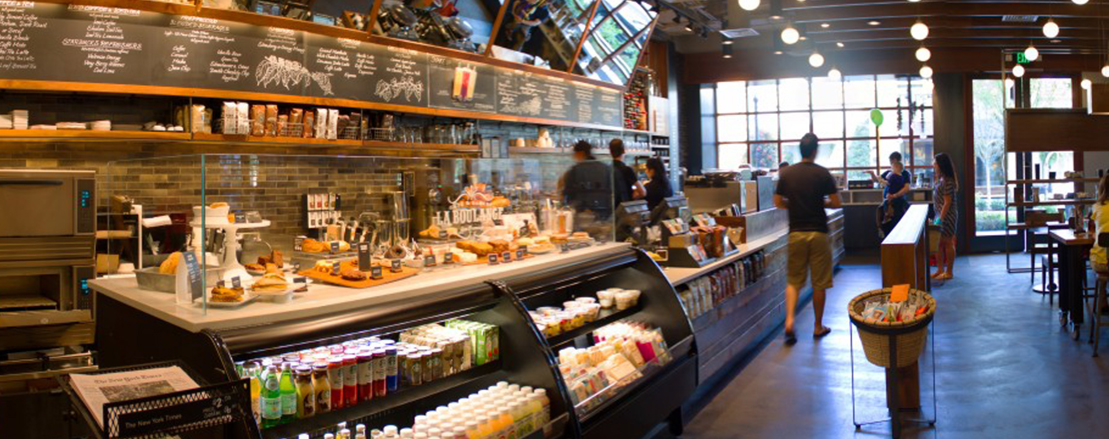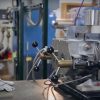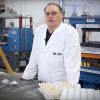
Howard Schultz saw Starbuck as not just a place for good coffee, but also for their dark-roasted flavor profiles that the founders were passionate about. The top quality, fresh-roasted, whole been coffee was the company’s differentiating feature and value. His original strategic vision during his partnership in 1982 was to expand on the product development and modify the format of Starbuck’s stores with space within the store to serve as an espresso bar. This strategic vision was something he experienced during his trip to Italy in 1983 and upon his return was a take away to what Starbucks could become. However, upon frustration he left Starbucks and started his own venture called Il Giornale. During this time he acquired capital investments to fund his company into a coffee bar enterprise. Within six months of operations, his store was serving more than 1,000 customers a day and soon later he opened another store. After opening a number of successful stores, Jerry Baldwin and Gordon Bowker decided to sell the whole Starbucks operation to Schultz. Ever since this acquisition, Schultz has evolved Starbuck’s strategic vision by acquiring other companies, expanding geographically, partnering in joint ventures and further developing his products/markets. Within his strategic vision for 2011-2012, I believe it will further evolve because of his expansive portfolio in his Starbucks brand. It will continue to meet the expectations of the customers and serve their needs. Technology will also play a vital role in the future of Starbucks’ success.
As the strategic vision evolves, so does the strategy. As Schultz continues to set his goals, he surpasses them without a doubt as they are executed. While planning to opening 125 stores in five years, resulted in 167. Schultz’ goal was to expand the Starbucks product offerings beyond its retail stores and to pursue sale of Starbucks products in a wider variety of distribution channels and market segments. His strategic objectives were to capitalize on Starbucks growing brand awareness and brand-name strength and create a broader foundation for sustained long-term growth in revenues and profits. As a result, several acquisitions have occurred and joint ventures have been established with other companies to distribute, market, and sell Starbucks products.
Starbucks uses a focused differentiation strategy approach amongst its competitors with aspects incorporating the grand strategy – market penetration, product development, market development and diversification.
By opening up multiple stores in various locations, they have saturated their footprint, which was built upon the “Starbucks everywhere” model.
New products like the ready-to-drink Frappuccino products and the Doubleshot espresso drinks were introduced.
The in-house sales groups began marketing Starbucks coffee to restaurants, airlines, hotels, universities, hospitals, business offices, country clubs, and select retailers. Early users of Starbucks coffee include Horizon Airlines and United Airlines. They also partnered with foodservice distributers like SYSCO Corporation and US Foodservice, to handle the distribution of Starbucks products to hotels, restaurants, office coffee distributors, educational and healthcare institutions and other such enterprises.
Starbucks started to offer their own premium single cup espresso and brewed coffee machine called the Verismo. Tazo teas were also a new product acquired by Starbucks that allowed them to enter a new market.
The North American Coffee Partnership allowed them to create new coffee-related products in bottles or cans for mass distribution through Pepsi channels. The International Coffee Partnership introduced Starbucks-related beverages in country markets outside of North America. The partnership with Dreyer’s Grand Ice Cream introduced a new line of coffee ice cream made and distributed by Dreyer’s under the Starbucks brand through their supply of coffee extracts, which then transitioned to an agreement with Unilever.
Starbucks incorporated specific practices when it a came to the coffee down to the employee. Its key polices were to have a high quality product, great work environment, connect with their customers and individualized store ambiance. They have also partnered with their employees by offering them great benefits including health care coverage and stock option plans. Employees were thoroughly trained about the roasting process, relationship building amongst customers, and behind the counter etiquettes. Starbucks’ mission states, “To inspire and nurture the human spirit – one person, one cup, and one neighborhood at a time.” The principles they follow every day:
Starbucks values its product and services to customers in with the highest standards. While they differentiate themselves as a premium dark roast coffee supplier, they continued to introduce new products in multiple channels. Just as they have described themselves in their mission statement, they continue to follow these principles to identify who they are. From the product to the shareholder, they work with their employees in providing the best customer engagement in an ambient store environment that contributes to the neighborhood.
While reviewing Starbucks’ social responsibility strategy, they have really proven themselves in these areas as who they are and continue to develop new methods to follow these guidelines. Like any company, it sounds cliché that they are obligated to support the environment and the communities to support their public image. It doesn’t hurt to follow these and helps them give a little back to the community. I don’t see a problem with these social responsibilities, Starbucks understands that it’s not always about the profit, but they still need profit to be successful. Other companies don’t have such responsibilities and take in all the profit and never give back.
In return Starbucks should gain a better position within their public image because they have made these efforts possible and clear for who they are within the community.
The financial performance of Starbucks shows a continued upward improvement from each previous year. However, we can see a substantial increase in operating income and net profit from 2009 to 2010.
Net Revenue
Operating Profit
Net Profit
Gross Profit Margin
Operating Profit Margin
Net Profit Margin
Howard Schultz has done a great job as Starbuck’s CEO, he displays great passion for his company and coffee. This passion is what drove his company to where it is today with over 17,420 store locations globally. While in 2000, he stepped down from CEO and took on the duty of chief creative officer. I question his decision for this and what the reason behind it if he was already a great CEO. I believe this has tarnished his reputation, however upon his return the company continues to flourish towards the future.
During this transformative effort, which became the centerpiece of Schutlz’s return as company CEO were strengthen the core, elevate the experience and invest and grow. The productivity of the Starbucks employees in U.S. company-operated retail stores increased from an average of 9.8 transactions per labor hour in fiscal 2008 to 11.3 transactions per labor hour in fiscal 2011. In addition, the percentage change in sales at company-operated retail stores open at least 13 months had risen from -9 percent in Q1 of fiscal 2009 to +4 percent in Q1 of fiscal 2010 to +9 percent in Q3 of fiscal 2010 and then remained in the range of +7 to +9 percent every quarter through Q2 of fiscal 2012. During the investment and growth phase, the company began formulating plans to open thousands of new stores in China over time. Asia clearly represented the most significant opportunity for the company.
Other attributes to his success as CEO include:
- Revenues were $6.6 billion, up 16 percent over the first six months of fiscal 2011.
- Operating income was $986.4 million, up 12 percent compared to the first half of fiscal 2011.
- Earnings per share were $0.90, up 14 percent over the prior year.
- Sales at all company-operated retail stores open 13 months or longer rose 8 percent during the first two quarters of fiscal 2012.
- In the second quarter, sales growth at company-operated stores in China at least 13 months exceeded 20 percent for the seventh consecutive quarter.
A number of issues confronted the company as of mid-2012, which included:
Less passionate about customer relationships and the coffee experience – Schultz noted upon his return that during his revamp of the company, employees lacked the passion that fueled the success of the company.
Higher commodity prices – Management indicates that is expect to encounter higher commodity costs of approximately $230 million in fiscal 2012, with the majority of this reflecting the first half of the year. This increase pricing can affect the price of coffee and the supplies.
Oversaturation of the market – While they may have controlled the number of store openings, they continue to think with “A Starbucks Everywhere” strategic approach, pushing their geographical footprint globally.
Premium coffee prices – While competitors enter the market, they are offering similar products at cheaper prices, which can result in a loss of profit. At the same time, premium coffee prices can deter from customers purchasing from Starbucks.
Management needs to make sure that they continue to differentiate their products to their customers as a high-quality product. If anything drastically changes with the brand, they can potential lose their customers. However, they shouldn’t worry as much because they have a solid brand that is well positioned to pursue a diversified, multichannel, multi-brand business model.
In order to sustain growth and support, I recommend that Starbucks continue to do the following:
Expand Internationally – While continuing to use the hub strategy, they need to enter the market more efficiently. These efforts have increased brand awareness in popular locations and helped customers use word of mouth.
Continued Partnerships – Strategic alliances and joint ventures will help Starbucks further distribute, market and sell products to their customers.
Coffee Prices – Become more aware of the premium coffee price they are offering and find alternatives to lower the cost of the products and continue the meet the demand of the customers.
Increased Marketing Efforts – As more competitors enter the market and produce cheaper coffee products, Starbucks will need to respond aggressively with marketing campaigns and advertising to promote the brand/product to the consumers.











Well it was quite a fascinating write-up.Thanx for sharing this type of tips with us.I’m hoping you’re going to continue on enlightening folks in future also,with this type of valuable information.Keep up the brilliant task.